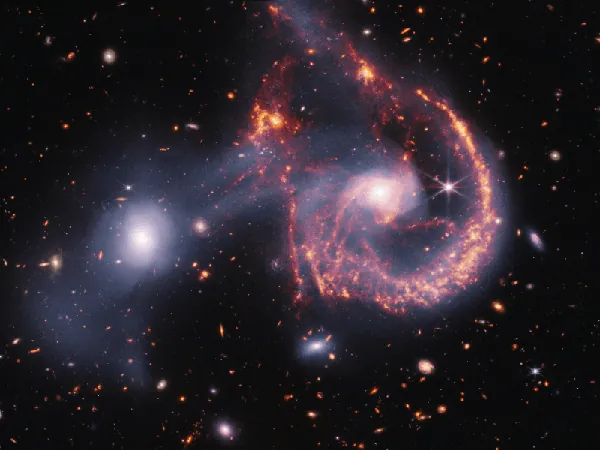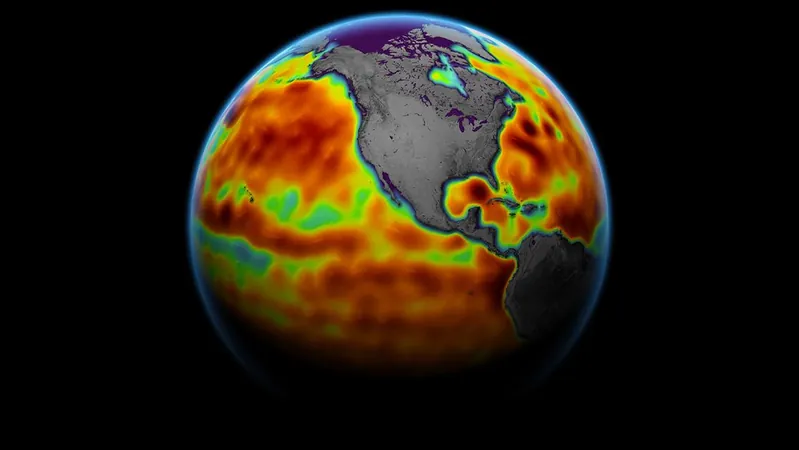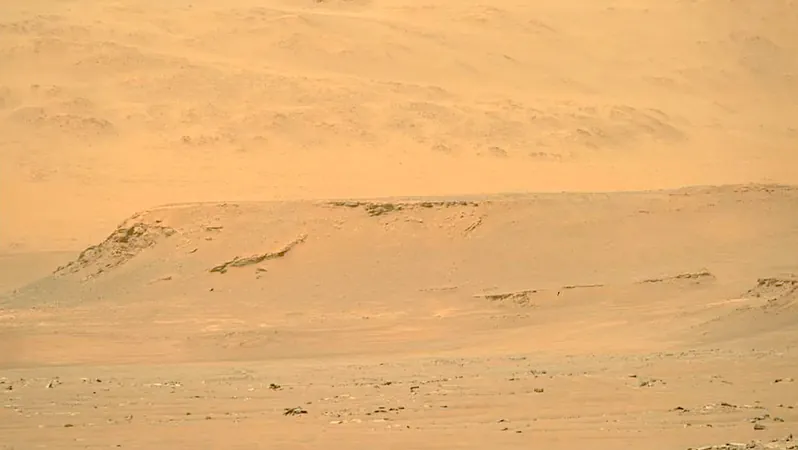
The James Webb Space Telescope Reveals Stunning Details of Galactic Collisions
2024-09-23
Prepare to have your mind blown! The James Webb Space Telescope (JWST) has captured an incredible image showcasing the spectacular merger of two galaxies, offering a glimpse into the cosmic drama unfolding in our universe.
A Closer Look at Arp 107
In its latest deep-space observation, the JWST focused on Arp 107—a captivating pair consisting of an elliptical galaxy and a spiral galaxy in the process of colliding. While this region has previously been explored using the Spitzer Space Telescope's infrared capabilities, JWST brings a whole new level of clarity and detail with its advanced technology.
Technological Marvel of JWST
Through the combined power of its Mid-Infrared Instrument (MIRI) and Near-Infrared Camera (NIRCam), JWST produced an astonishing image revealing a striking white bridge of gas linking the two galaxies. This visual phenomenon captures the profound effect of gravitational forces at play as these celestial bodies draw closer together.
A Cheerful Galaxy?
NASA has playfully noted that the spiral galaxy in the image appears to wear a bright, cheerful expression, complete with two luminous “eyes” and a wide smile. Such anthropomorphic interpretations allow us to connect with these distant cosmic entities on a personal level. What's more, observations from the MIRI instrument showcase a glowing nucleus at the heart of the larger spiral galaxy, thought to contain a supermassive black hole—an enigmatic force that continues to puzzle astronomers.
Understanding Seyfert Galaxies
This spiral galaxy is classified as a Seyfert galaxy, part of a major category of active galaxies. Seyfert galaxies are crucial for researchers, as they are less luminous and more accessible than their more distant counterparts, quasars. This accessibility allows scientists to study active galactic phenomena in lower-energy light, particularly in infrared wavelengths.
Galactic Collisions and Star Formation
But wait, what does a galactic collision mean for star formation? While the term may evoke thoughts of cosmic chaos, NASA clarifies that these interactions are not as catastrophic as one might assume. In fact, the gravitational forces can compress gas and create conditions favorable for new stars to form. However, such collisions can also disperse a significant amount of gas, posing a risk of depriving new stars of the essential materials required for their birth.
Ongoing Discoveries with JWST
As the JWST continues its mission to unravel the mysteries of the cosmos, this vibrant image contributes valuable insights into the processes of star formation—an area of primary focus for the observatory's research endeavors.
Anticipating Future Revelations
This isn't JWST's first rodeo with galactic collisions; the latest image notably shares similarities with the renowned Cartwheel Galaxy, which was among the initial galaxies the telescope observed. As Webb embarks on its journey through the cosmos, we can eagerly anticipate more revelations illuminating the dynamic nature of our universe.
Stay tuned as we uncover the thrilling secrets of the cosmos through the lens of the James Webb Space Telescope!



 Brasil (PT)
Brasil (PT)
 Canada (EN)
Canada (EN)
 Chile (ES)
Chile (ES)
 España (ES)
España (ES)
 France (FR)
France (FR)
 Hong Kong (EN)
Hong Kong (EN)
 Italia (IT)
Italia (IT)
 日本 (JA)
日本 (JA)
 Magyarország (HU)
Magyarország (HU)
 Norge (NO)
Norge (NO)
 Polska (PL)
Polska (PL)
 Schweiz (DE)
Schweiz (DE)
 Singapore (EN)
Singapore (EN)
 Sverige (SV)
Sverige (SV)
 Suomi (FI)
Suomi (FI)
 Türkiye (TR)
Türkiye (TR)